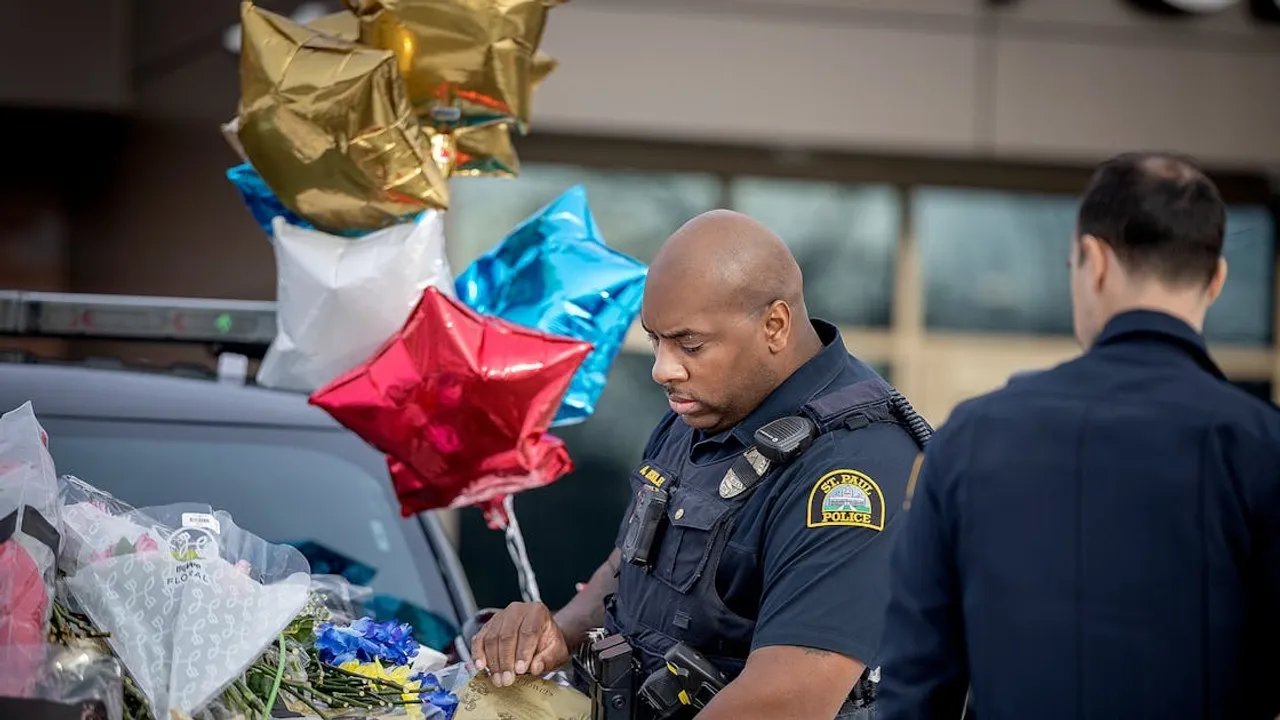As the sun rose over Burnsville, casting light on the aftermath of a devastating incident that claimed the lives of three first responders, a palpable sense of grief and anger enveloped the community. This tragic event, however, is not just a sorrowful chapter in the city’s history but a grim mirror reflecting the multifaceted crisis facing America today: the intertwining dilemmas of gun violence, law enforcement’s eroding public trust, and the contentious debate over gun control laws.
The Burnsville incident underscores a growing disdain and distrust towards police officers, fueled by a volatile mix of political rhetoric and advocacy that often paints law enforcement with a broad, unforgiving brush. Amidst this backdrop, the profession faces a staffing crisis, with interest in policing careers dwindling. The consequences of such a trend are dire, leading to understaffed departments and overworked officers, further straining the relationship between law enforcement and the communities they serve.
In the wake of the tragedy, questions about the effectiveness of gun control laws have resurfaced with a vengeance. The shooter, a convicted felon, managed to obtain firearms illegally, spotlighting the gaping loopholes in our current system. Despite stringent laws in place, like those mentioned in a recent analysis of New York’s efforts to combat gun trafficking, the enforcement and efficacy of these regulations are in question. This incident highlights the need for more comprehensive measures, such as safe storage and mandatory reporting of stolen guns, as advocated by Minnesota bills receiving renewed attention.
The broader issue of gun violence in America demands a multifaceted approach. Beyond legislative measures, there’s a pressing need to address the societal factors that contribute to the epidemic of violence. Initiatives focusing on safe storage and mandatory training, alongside restrictions on certain types of firearms, are steps in the right direction. However, as highlighted in discussions around state laws concerning unlocked weapons, a balance must be struck to educate and enforce without alienating gun owners. This delicate balance is crucial in fostering a culture of responsibility and respect for the sanctity of life—a principle echoed in debates far removed from gun control, such as the Alabama Supreme Court’s recent ruling on frozen embryos.
As Burnsville mourns, the nation watches and reflects. The path forward is fraught with challenges, demanding a collective effort to reimagine our approach to gun violence, law enforcement, and the laws that govern us. The tragedy in Burnsville is not just a call to action but a somber reminder of the work ahead to heal and unite a divided country.
As the ink dries on the latest crime report from the Durham Police Department, the city finds itself at a crossroads. The report, a meticulous compilation of crime statistics from 2022 to 2023, reveals a complex tapestry of victories and challenges in Durham, N.C. A slight decrease in overall violent crime masks the unsettling rise in homicides and rapes, while property crimes burgeon, led by an alarming surge in motor vehicle thefts. Amidst this backdrop, the potential resurrection of the ShotSpotter gunfire detection system emerges as a contentious focal point in the city’s fight against crime.
The 3 percent drop in violent crime offers a glimmer of hope, a testament to the diligent efforts of law enforcement and community initiatives. However, the devil lies in the details. The 8 percent increase in homicides and a 16 percent uptick in rapes cast long shadows, challenging the narrative of progress. On the other end, robberies and aggravated assaults have seen declines, suggesting targeted interventions might be bearing fruit. The property crime spectrum, however, paints a grimmer picture with burglaries, larcenies, and especially motor vehicle thefts — skyrocketing by 134 percent — eroding the sense of security among Durham’s residents.
In the quest for solutions, the ShotSpotter system stands out. Initially introduced as a pilot program, this technology promises to pinpoint the location of gunshots with remarkable accuracy, potentially offering a lifeline to communities besieged by gunfire. The system’s pilot phase, which concluded in December of the previous year, showcased promising results, including improved response times to shooting incidents. The Durham Police Department is now advocating for a three-year contract, a proposal backed by data suggesting a tangible impact on crime response efficacy.
Yet, the ShotSpotter debate is far from black and white. Critics argue the technology could exacerbate tensions in communities of color, increasing police presence in areas already fraught with trust issues. Privacy concerns also loom large, with skeptics questioning the surveillance implications of such a system. These apprehensions are not unfounded, stirring a robust dialogue among Durham’s city council members, law enforcement, and the community at large. Durham News and WRAL have extensively covered these discussions, highlighting the array of perspectives that color this complex issue.
The forthcoming city council decision on the ShotSpotter contract represents more than just a fiscal commitment; it’s a reflection of Durham’s broader struggle to reconcile innovation with inclusivity in public safety. As the city weighs the benefits of potentially quicker response times against the backdrop of community concerns, the path forward remains uncertain.Read the Next Article
In a quiet corner of Pembroke Dock, a story unfolds that tugs at the ethical strings of humanity and challenges the boundaries of legal enforcement on animal welfare. Sean Burns, a name previously etched into the annals of illegal animal breeding, finds himself in the spotlight once again. This time, Burns is accused of defying an indefinite ban on keeping animals, a prohibition placed upon him back in February 2020 after a conviction that included 13 animal welfare charges. Despite the legal restrictions, Burns allegedly continued harboring creatures large and small, from tortoises to love birds, and yes, dogs, at Bramble Hall Farm and another undisclosed location, between January 26, 2022, and July 11, 2022.
Burns’ history with the law over animal welfare is not new. In 2020, alongside his 20-week prison sentence, he was handed an indefinite ban from keeping animals after admitting to a slew of animal welfare charges. Additionally, in September of the same year, Burns received a suspended prison sentence for the production of smokies at the farm, a practice that involves the illegal slaughter of sheep and goats. Fast forward to 2022, and Burns is scheduled to appear at Haverfordwest Magistrates Court on Monday, September 26, to respond to three charges of breaching his disqualification as per the Animal Welfare Act. The legal proceedings against Burns are a testament to the ongoing battle against animal cruelty and the challenges of enforcing legal sanctions on repeat offenders.
The consequences of illegal animal breeding and keeping extend far beyond the confines of Bramble Hall Farm. In a related narrative, over 50 pigs were rescued from an illegal slaughterhouse in Pembrokeshire and found sanctuary in Ceredigion. The Beneath the Wood Animal Sanctuary, which housed these pigs along with other rescued animals, faced its own set of challenges when a retrospective planning application for its buildings was refused. This decision underscored the intricate relationship between animal welfare, legal compliance, and community impact. The refusal, attributed to concerns about vehicular access, environmental impact, and visual appearance, highlights the complexities of providing sanctuary to animals rescued from situations like those allegedly perpetuated by Burns. The story of the rescued pigs and the sanctuary’s struggles emphasizes the broader implications of illegal animal activities.
As Burns prepares to face the court, the case against him serves as a crucial reminder of the importance of vigilance and legal adherence in the realm of animal welfare. The allegations suggest a blatant disregard for the law and raise significant concerns about the efficacy of legal restrictions in deterring repeat offenses.




